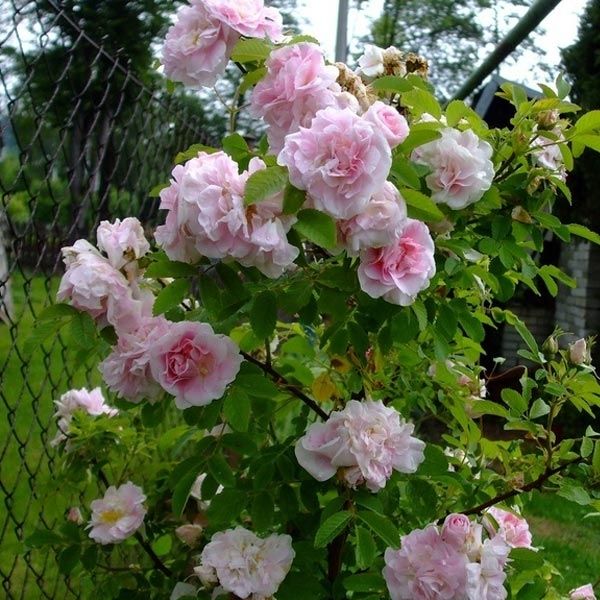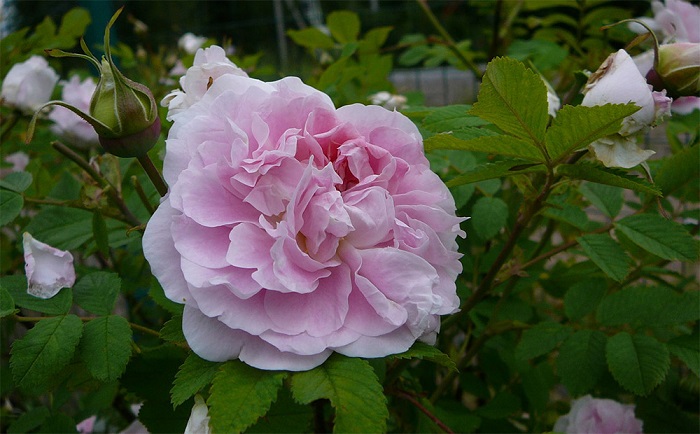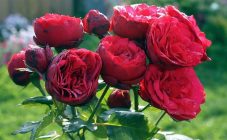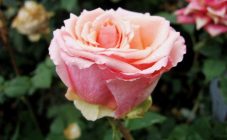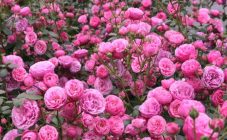Content:
Explorer series roses were created in Canada as super-hardy varieties. Rose Martin Frobisher is one of the best in her. The climate of Canada is similar to the Russian one, so the roses of this series feel great in the conditions of central Russia and even in higher latitudes.
History of creation
All varieties in this series are named after famous sailors. The traveler Martin Flaubischer lived in the 16th century and, dreaming of discovering warm eastern lands, ended up on the harsh shores of North America, where Canada is now.
In the middle of the 20th century, Canadian breeders, under the leadership of Felicia Sveid, began to breed hybrids adapted to growing them in places with cold winters. There are already more than 20 varieties in the Explorer series, the Martin Frobisher rose is the very first.
The breeding of this variety was completed in 1962, the desired result - excellent tolerance to frosty winters - was achieved.
Characteristics and features of the variety
Martin Frobisher, a rose called Martin for simplicity, blooms with pale pink flowers, with a completely white petal on the back, which gives the rose a special grace and originality. Closer to the center, the intensity of the pink color increases. The diameter of the flowers is 5-6 cm, they appear in the form of brushes of 3-5 pieces, the number of petals is about 40. Roses have a delicate scent of rose oil, which can be felt from a distance. Each flower does not live long, but instead of those that have faded, new ones appear immediately, so the bush is constantly decorated with flowers.
This is a park variety with a bush height of up to 1.75 m and a width of up to 1 m. With such dimensions, the bushes look proportionate and harmonious. The bark on young shoots has a reddish tint, there are no thorns, the foliage is bright green, dense.
Parks canadian rose look great in the form of hedges, they can be used to decorate garden gazebos, gate arches and living figures.
Agricultural technology of cultivation
Like all varieties of the Explorer series, the Canadian park rose Martin Frobisher is quite unpretentious in care. It can be planted both in a sunny place and in partial shade. The planting hole digs to a depth of 0.5-0.6 m, a square with a side size of 0.9 m. The root collar should be buried 5 cm below ground level so that rose hips do not germinate on the stock. The soil should have a slightly acidic reaction; when planting in the ground, add humus, ash and sand.
The roots go to a great depth, so a lot of water is required for irrigation. Watering is necessary in the heat at least twice a week. If humus and mineral fertilizers were introduced during planting, then at first the rose does not need feeding. In the future, fertilizers are applied every 20 days, in the spring these are nitrogen fertilizers, and during flowering - potassium-phosphorus fertilizers.
Martin Flaubischer roses need regular pruning. Description of scraps:
- Spring is to remove all frozen and dried branches. Only 5-6 strong shoots are left, which should be shortened to the seventh-eighth bud.
- In the summer, faded buds are removed to make the bush look attractive.Shoots that have not given buds are also cut out so that they do not interfere with the growth of full-fledged branches.
- Autumn pruning consists in removing the green parts of the shoots, and the weak and diseased branches are cut out completely.
- 6-7 years after planting, the rose bush rejuvenates. For this, all shoots must be cut to the base. In their place, new young shoots will grow, capable of producing many flowers.
Frost-resistant varieties of roses rarely get sick, but severe weather conditions sometimes still lead to the appearance of gray rot, which manifests itself in the form of mold on the buds. The affected buds must be removed, and the bush must be sprinkled with infusion of onion peel.
Powdery mildew will be eliminated by spraying with copper preparations Topaz or Forecast. To prevent the rose from becoming infected with black spot, it should be planted away from other plants prone to this disease.
To protect the bush from weeds, mulching is used. This procedure, in addition to combating weeds, will allow you to retain moisture, eliminate such laborious techniques as loosening, weeding. It is important to choose the right mulching material. Fallen leaves and pruning products of the roses themselves should not be used, as they may contain sources of disease. Too thick a layer of mulch will also lead to waterlogging and may cause infection.
A suitable material for mulching roses is tree bark. It does not interfere with the passage of water and air, the soil under it does not overheat. Crushed bark is not carried by the wind, it is very decorative, especially if it is tinted in dull colors.
Before winter, the rose bushes are cut off, the shoots are bent to the ground with slingshots and the bush is buried with a small layer of compost soil. When hilling, you should not take the earth around the trunk, this will lead to exposure of the roots and death of the bush from frost.
When snow falls, you can additionally throw it on the bush. If there are frosts without snow, then the bush is insulated with spruce branches, dry grass and other similar insulation.
By purchasing one Martin Flaubischer rose sapling, you can later get new plants from it by propagating the bush using cuttings. To do this, an annual shoot 25 cm long is cut off, all leaves except the top two are removed from it. The twig is buried in the ground along these leaves, watered and covered with a plastic bottle. For the winter, the bottle is spud with earth. In the spring, the earth is removed, the cap is screwed off the bottle. When it gets warmer, and green buds appear on the shoot, the bottle is removed. The stalk turns into a full-fledged young plant in one season.
Advantages and disadvantages of the variety
The advantages of the Martin variety include:
- High winter hardiness. This quality makes it possible to grow a rose in the conditions of the Leningrad region and other northern regions of the country.
- The proportional shape of the bush allows you to grow it like a scrub.
- Continuous flowering throughout the summer season makes the variety especially attractive to gardeners.
- The absence of thorns on young shoots is a valuable quality when creating bouquets.
- Easily tolerates short-term drought.
- Responds well to watering and feeding.
The disadvantages include poor resistance to pest attacks, so preventive spraying with insecticides is necessary.
In strong sunshine, the flowers can crumble in one day, and in dense shade there is a chance that the rose will not bloom at all.
During long rainy periods, the roses do not open, the buds darken and rot.
Due to their unpretentiousness and frost resistance, Martin rose bushes grow rapidly and create the basis for compositions with other varieties. Where winters aren't too harsh, these roses don't cover at all, so they're ideal for hedges and gazebos. Gardeners like the variety because it does not create a lot of trouble.
